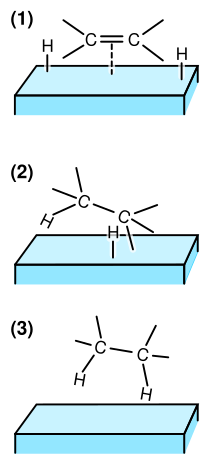Heterogeneous catalysis

Heterogeneous catalysis is like having a helper that helps you do something faster and easier. Imagine you want to turn a big rock into a pretty statue, but it would take you a very long time to do it by yourself. But if you had a helper who has a special tool that can break down the rock much faster than you could, your job would be much easier and faster.
In a similar way, when we want to change one substance into another substance, we use a helper called a catalyst. A catalyst is a material that helps make a chemical reaction happen faster and with less energy. In the case of heterogeneous catalysis, the catalyst is a solid material, like a rock.
So when we want to turn one substance into another substance, we take our catalyst and mix it up with the first substance, just like we put the rock and the helper together to make the statue. The substance we want to change sticks to the surface of the catalyst, just like the rock sticks to the surface of the helper tool. Then, the catalyst helps make the reaction happen faster, just like the tool helps break down the rock faster.
The process of heterogeneous catalysis is very important in many industries, like making fuels, plastics, and medicines. It helps us save energy, time, and money, just like having a helper makes our work easier and faster.
In a similar way, when we want to change one substance into another substance, we use a helper called a catalyst. A catalyst is a material that helps make a chemical reaction happen faster and with less energy. In the case of heterogeneous catalysis, the catalyst is a solid material, like a rock.
So when we want to turn one substance into another substance, we take our catalyst and mix it up with the first substance, just like we put the rock and the helper together to make the statue. The substance we want to change sticks to the surface of the catalyst, just like the rock sticks to the surface of the helper tool. Then, the catalyst helps make the reaction happen faster, just like the tool helps break down the rock faster.
The process of heterogeneous catalysis is very important in many industries, like making fuels, plastics, and medicines. It helps us save energy, time, and money, just like having a helper makes our work easier and faster.
Related topics others have asked about:
